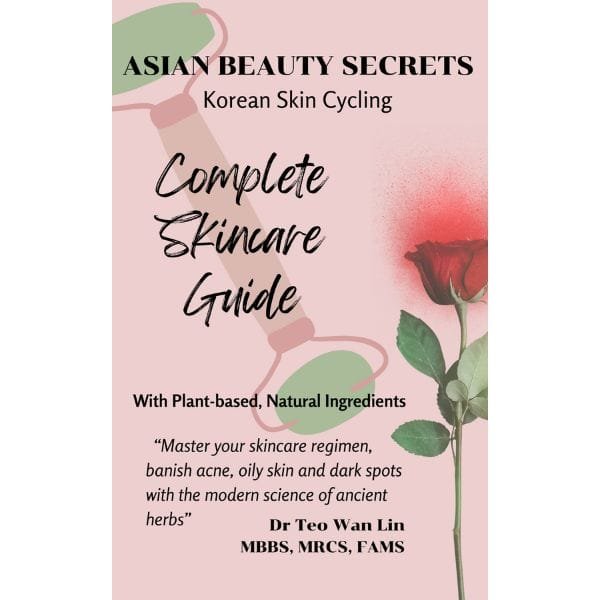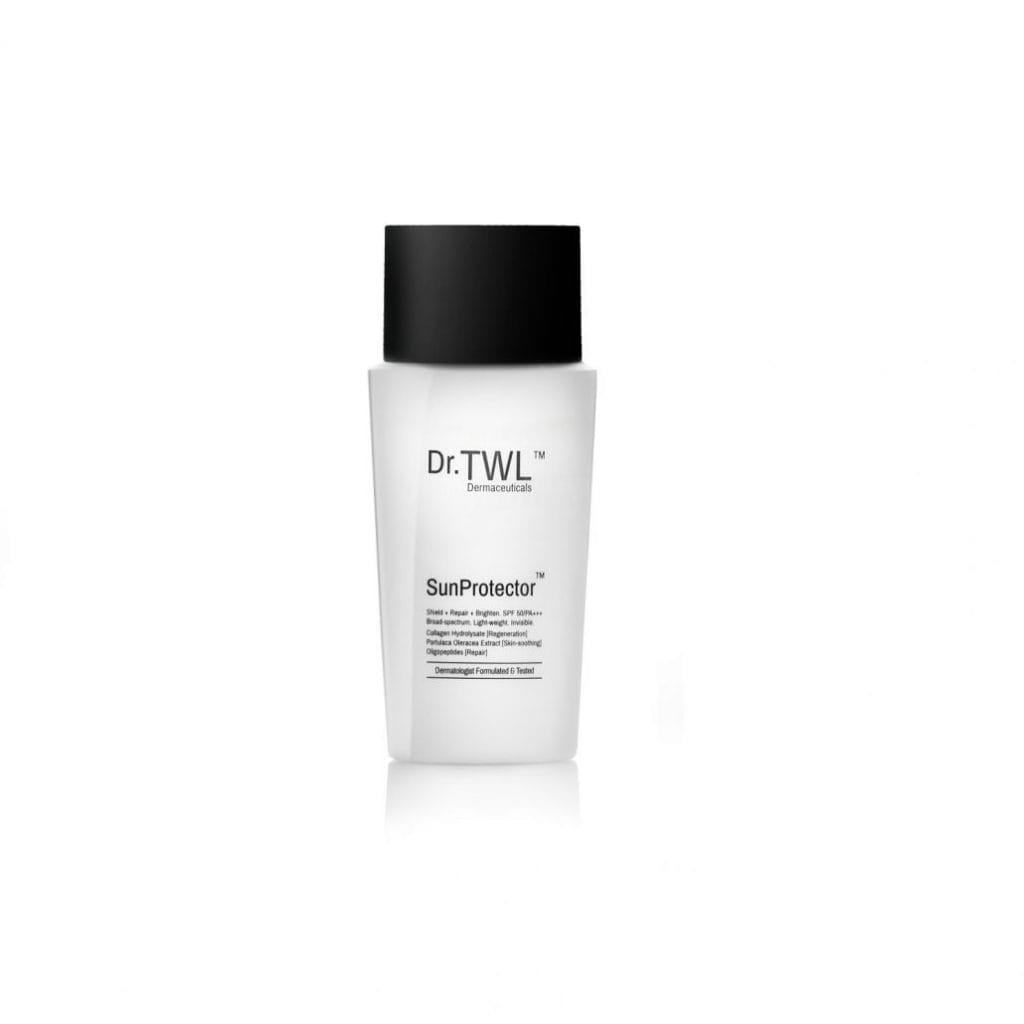5 Step Korean Skincare Routine Demystified by a Dermatologist

In beauty heaven, We have heard it said that the streets of Seoul are paved with… Glass skin. While that may be a hyperbole, on this podcast, you and I know that there are certainly some Asian beauty secrets that must be told. In this episode, I am going to teach you how you can incorporate an easy korean skincare routine for day and night. The focus here is simple- not the 7 or 9 step routines but a manageable 3 or 5 step easy Korean skincare routine which you can build on.
What is glass skin?
First of all let’s define glass skin. A translucent complexion that is so clear it almost looks like it reflects light. Now that is clearly a hyperbole, but us beauty fiends can always dream right?
The key difference with korean skincare is that it incorporates not just one or two actives (as it is the case for the west’s cleanse- tone- and moisturise) but a plethora of botanicals curated from the relatively esoteric field of asian ethnobotany. These botanicals work in synergy to harmonise the skin microclimate as part of an ecosytem. The other conceptual difference in this east vs west juxtaposition is that the former, eastern skincare routines emphasise compatibility and harmony, as opposed to western prescriptions of functionality only. I.e thinking of cleansing purely as a way to remove physical debris. As opposed to an opportunity to incorporate antioxidants that can calm and soothe inflammed skin, while removing debris.
In the cleanse-tone-moisturise rhetoric, toners are to oily skin what talismans are to devils. I exaggerate a little, but I remember the very first skincare regimen I followed as a teen was a cleanse-tone moisturise one and it left combination my skin terribly dehydrated, yet oily. It is as paradoxical as it sounds.
Choosing the right toner

The problem here is that traditional toners contain astringents. For example, alcohols and salicylic acids, AHAs, lactic and glycolic acid. When used as leave-on skincare, these can irritate skin. Which does not spell good news for skin of color. Asian skin types are more prone to post-inflammatory hyperpigmentation arising from inflammation. Essentially, this refers to redness flaking or any form of skin irritation that constitutes skin inflammation.
In the last few years, we have seen how the skincare industry has begun to emphasise skin barrier repair as a crucial component of an effective skincare regimen. Suffice to say, alcoholic astringents are now universally acknowledged as bad for the skin. This is because they do nothing for the skin barrier, and in fact can damage it. Additionally, it is a myth that it can cure or treat oily skin. It merely leads to the dreaded oily and dehydrated skin phenomenon.
Korean skincare toners
It is precisely because of international interest in K-beauty that has increased awareness of this. This brings us to the next point about how K-beauty toners work. Remember I mentioned the broad mix of botanicals that are used in K-beauty rather than a single active ingredient that western formulas tout? K-beauty toners contain botanical actives that regulate the skin microenvironment. They do this by repairing the skin barrier, reducing inflammation, and helping skin adapt.
You may have heard of adaptogenic skincare. The science of Asian beauty is precisely in that skin is a living organism that interacts and adapts to its environment. It also looks like the ancients did unravel the secret to beauty regimens. One that derives lessons from nature’s plant ecosystems. Interestingly, the exposome which we consider the sum of total environmental and genetic exposures that influence aging, also applies to plants in their natural environment. Except, that plants need UV for photosynthesis, whereas it looks like UV is our skin’s enemy. Is it? In my other podcast Dermatologist Talks: Science of Beauty, I discuss how 2023 is the year of the exposome. This is because it is by understanding the exposome that we begin to unravel how plant based skincare benefits our skin.
Plant-based skincare actives: the foundation of an easy Korean skincare routine
The crux of Korean skincare routines is that it utilises plant-based skincare actives to allow your skin to adapt to the environment. From the perspective of the exposome, we find that it is not all that surprising after all since we find plants are able to adapt to their environment. This is the genesis of adaptogenic skincare, hitherto marketed by beauty brands primarily as desert plant based. The reason is clear. The desert represents an extreme environment. It’s easy for laypersons to understand that plants that can survive in the desert have special adaptations to help them do so.
Finally, K-beauty moisturisers are usually in the form of emulsions or lotions rather than creams. It also incorporates a variety of actives including synthetic peptides. Additionally, they tend to omit potentially irritating ingredients like retinol or acids that are present in western formulas. We often think that it’s beneficial to incorporate an anti-aging ingredient in everything. That’s a misconception that beauty marketing wants you to believe. Because that is exactly what would set them apart from other brands isn’t it? And also get this and that which is personalised for your skin type. It sounds attractive, but it may not be accurate.
Dermatologists for example, recommend universally tolerated skincare formulations. Rather than a special cleanser or toner or serum for this or that concern.
Easy Korean skincare routine
Finally, I want to touch on the popular 5 step easy Korean skincare routine. What it is for me looks something like this.
- Cleanser
2. Toner- more like an antioxidant lotion. Or, what people don’t realize is also the facial mist in K-beauty context. The way water compresses itself is regarded as an astringent as it is able to draw out excess oil, without the need for alcohol. The added benefit of using your facial mist as a toner is this, throughout the day, it is convenient to mist regularly over your makeup or even use it as part of your touch up.

Serums -can be an all-in-one formula or divide into different serums that address separate concerns. Keeping in mind that all-in-one formulas while convenient, actually have lower concentrations of active ingredients
Moisturiser – Emulsion or lotion for most skin types for a daytime routine.
Sunscreen – which itself is not just blocking UV with physical and chemical blockers but also contains adaptogenic skincare ingredients. For example, in our Pharmacy, we use purslane which helps improve your skin’s resilience against environmental damage by building an antioxidant reserve in the skin.

Asian beauty skincare regimens are simple
Skincare truly can be simple. Beauty marketing and buzzwords like “science of beauty” sometimes intimidate users who just want a simple way to care for their skin, for skin health. In my book Asian Beauty Secrets, my goal is to show you the simplicity of the science of skincare with pearls of wisdom imparted by the ancient art of ethnobotany.
Dr. TWL TV
Check out more beauty related news and tips on beauty podcasts by Dr.TWL on spotify and follow our IG @drtwl.tv!